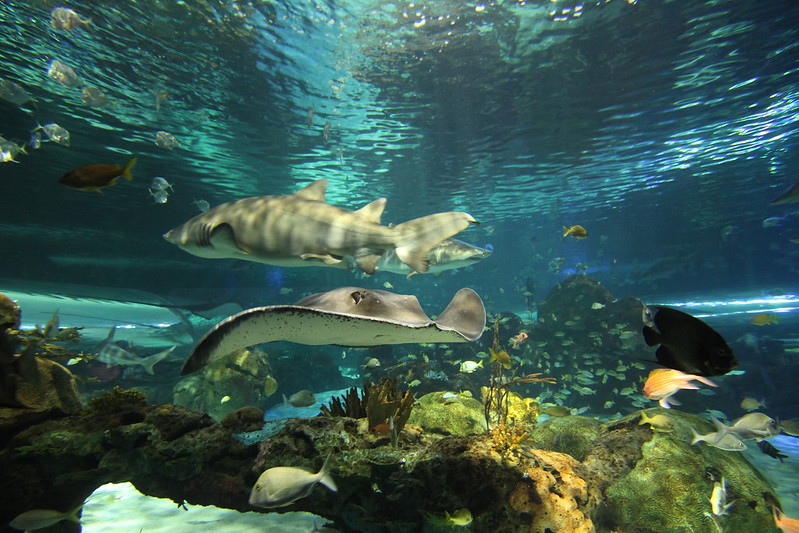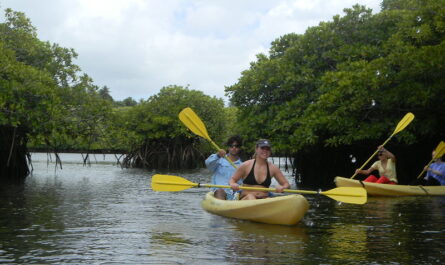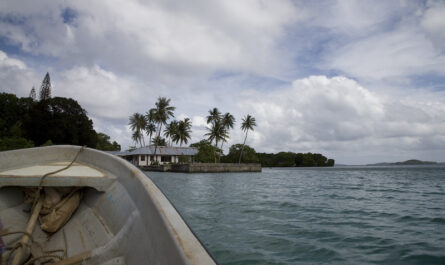Chuuk Lagoon, formerly known as Truk Lagoon, is an underwater paradise for divers and history enthusiasts alike. Located in the Federated States of Micronesia, Chuuk Lagoon is renowned as the world’s largest underwater wreck site, with over 60 sunken ships, aircraft, and various war relics from World War II resting at the bottom of the lagoon. These wrecks, combined with the vibrant marine life that now inhabits them, make Chuuk Lagoon one of the most sought-after diving destinations in the world.
1. A Legacy of World War II: Operation Hailstone
Chuuk Lagoon’s transformation into the world’s largest underwater wreck site is the result of Operation Hailstone, a massive U.S. air and naval attack that took place from February 17–18, 1944 during World War II. The Japanese had turned Chuuk into a major naval base, using the natural lagoon as an anchorage for its Pacific fleet. Recognizing the strategic importance of the lagoon, the U.S. launched a surprise attack, sinking dozens of ships and aircraft in just two days.
Among the wrecks are cargo ships, destroyers, tankers, aircraft carriers, and fighter planes. While the event was devastating at the time, it has left an extraordinary legacy—Chuuk Lagoon has become a treasure trove for divers, with the wrecks largely preserved underwater, offering a glimpse into history.
2. The Best Dive Sites at Chuuk Lagoon
Chuuk Lagoon’s wrecks are spread across a vast area, and each dive site offers its own unique experience. Some of the most notable wrecks include:
- Fujikawa Maru: One of the most famous wrecks in Chuuk, this Japanese cargo ship was carrying fighter planes when it sank. Divers can explore the ship’s interior, which still contains Zero fighter planes, as well as coral-covered guns and ammunition.
- San Francisco Maru: Known as the “Million Dollar Wreck”, the San Francisco Maru is a cargo ship that sank with an array of wartime cargo, including tanks, trucks, and mines. The depth of the wreck makes it more challenging but rewarding for experienced divers.
- Shinkoku Maru: A former oil tanker, now encrusted with colorful coral and home to diverse marine life. The wreck’s structure is largely intact, allowing divers to explore its impressive engine room and medical supplies.
- Hoki Maru: Another notable cargo ship, the Hoki Maru is best known for the construction equipment and materials it carried, which are still visible on the seabed.
Many wrecks remain largely undisturbed, making Chuuk Lagoon an underwater museum where divers can not only see the remains of the war but also interact with the coral reefs and marine life that have taken over these once-active war machines.
3. Marine Life and Underwater Ecosystems
While the wrecks are the main attraction, Chuuk Lagoon also offers a thriving marine ecosystem. Over the decades, the wrecks have become artificial reefs, attracting an array of marine life. Divers can expect to see vibrant coral formations, schools of fish, sharks, rays, and even turtles swimming amidst the sunken ships. The contrast between the historical wrecks and the natural beauty of the lagoon makes each dive a surreal experience.
4. The Challenge of Wreck Diving
Diving in Chuuk Lagoon offers a range of experiences suitable for both novice and experienced divers. However, many of the wrecks are located at significant depths, making some dives more technically challenging. For example, the San Francisco Maru sits at a depth of around 60 meters (200 feet), which requires advanced wreck-diving skills and specialized equipment.
Penetration dives, where divers explore the inside of sunken ships, can also be tricky due to narrow passageways, rusting metal, and low visibility in some areas. Many dive operators in Chuuk offer technical diving courses to help divers prepare for the unique challenges of the site.
5. Exploring History and Preservation Efforts
Chuuk Lagoon’s wrecks are not just diving attractions—they are also historical artifacts. Many of the ships and planes still contain wartime supplies, ammunition, and personal belongings of the soldiers who perished in the attack. The wrecks are considered war graves, and efforts are made to preserve the integrity of these underwater relics.
In recent years, conservationists and historians have worked to document and protect the wrecks from damage caused by diving or environmental factors. The Chuuk Historical Preservation Office plays a key role in these efforts, ensuring that Chuuk Lagoon remains both a world-class diving destination and a place of historical reverence.
6. Planning Your Dive at Chuuk Lagoon
If you’re planning to dive at Chuuk Lagoon, the best time to visit is between December and April, when the waters are calmest and visibility is at its best. There are several dive operators on the island, offering liveaboard dive boats and shore-based diving tours. These operators provide guided dives to the most famous wrecks and offer specialized equipment for wreck and technical diving.
Most divers base themselves on Weno Island, the main island of Chuuk, where accommodations range from dive resorts to more budget-friendly options. From here, divers can easily access the lagoon and its numerous wrecks.
Conclusion
Chuuk Lagoon is not just the world’s largest underwater wreck site; it’s a living museum where history meets marine life. From exploring sunken warships to discovering coral-encrusted aircraft, diving in Chuuk is a unique experience that offers a blend of historical exploration and natural beauty. Whether you’re a seasoned wreck diver or a history buff, Chuuk Lagoon provides a window into the past, preserved beneath the waves of the Pacific.



